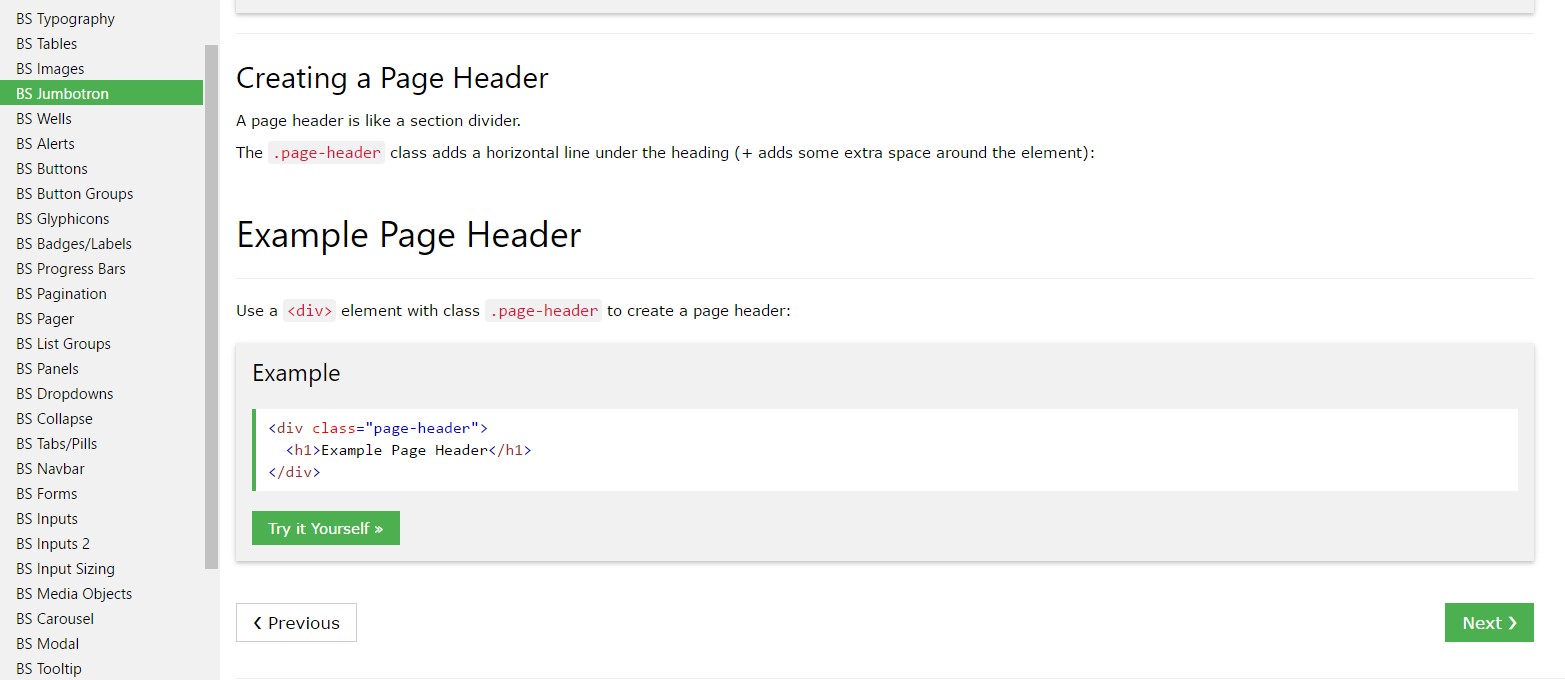Bootstrap Header Code
Overview
Like within published documentations the header is just one of the most important elements of the webpages we develop and obtain to use every single day. It safely and securely keeps the most essential information relating to the identity of the organisation or else person behind the webpage itself and the essence of the entire site-- its own navigating construction which in turn as well as the Bootstrap Header Design itself really should be thought and design in this kind of approach that a visitor in a rush or definitely not actually knowing what way to head to merely take a peek at as well as identify the desired information. This is the most suitable circumstance-- in the real world getting as close as feasible to this appearance and activity additionally goes on since we almost every moment have some project specified limitations to take into account. Additionally unlike the written documentations around the world of web we should really always keep in mind the assortment of possible gadgets on which our pages could potentially get exhibited-- we should assure their responsive activity or in other words-- ensure they will reveal ideal at any monitor size possible.
So let us have a look and observe ways a navbar gets built in Bootstrap 4.
Exactly how to make use of the Bootstrap Header Example:
First off for you to make a web page header or else given that it gets referred to in the framework-- a navbar-- we have to wrap the whole item inside a <nav> element along with the .navbar plus .navbar-toggleable- ~ screen size ~ assuming that you would likely want it to collapse in a mobile style just where the display scale is just one of the predefined Bootstrap 4 display screen scales at the reach of which the actual collapse will take place. Also this is actually the place to add some of the brand new for this edition background color .bg-* and color arrangement classes-- like .navbar-light and .navbar-light
Within this parent component we must start by inserting a tab element that will be operated to present the collapsed material on a smaller sized display screen sizes-- to perform that generate a <button> with the class .navbar-toggler as well as in addition - .navbar-toggler-left or else .navbar-toggler-right classes which will adjust the toggle button's placement in the collapsed Bootstrap Header Class. This element should additionally carry a few attributes such as type = " button ", data-toggle ="collapse" and data-target = " ~ the collapse element ID ~ which we will determine in just a few procedures further .
What's bright new for latest alpha 6 release of the Bootstrap 4 framework is that within the .navbar-togler you should additionally wrap a <span> component together with the .navbar-toggler-icon that is introduced for improving the flexibility in editing the appeal of the toggler button in itself constructing it mix much better to the general web page's visual appeal. Next to the toggle switch we should now apply the components offering our product -- to accomplish this produce an <a> element with the .navbar-brand class and cover your logo design just as an <div class="img"><img></div> tag and brand in it or else if you desire-- place simply the company logo or even reject the component completely-- it's not a necessary however in the event you want it showcase right before the web site navigation-- this is probably the most usual location it need to take.
Now-- the essential component-- generating the collapsible container for the primary web site navigation-- to do it produce an element with the .collapse and .navbar-collapse classes used to wrap the entire site navigation construction up. It is important for you to likewise appoint an unique id =" ~ same as navbar toggler data-target ~ " property to this element. Later-- this is probably the most typical solution-- inside this .collapse component build an <ul> with the .navbar-nav class selected for it. Inside of this <ul> designate some <li> elements with the .nav-item class appointed and inside them-- the definite site navigation links - <a> elements carrying the .nav-link class. This complete classes construct is new for Bootstrap 4 due to the fact that the last edition did certainly not utilize the .nav-item and .nav-link classes. This navigation structure in this framework fully supports multiple levels of navigation wrapped inside of the dropdown elements. To create one make sure along with the .nav-item you have also assigned .dropdown class to the <li> element and .dropdown-toggle - to the .nav-link inside it. Next inside the very same .nav-item element create a <div> with the .dropdown-menu class and inside of it – place the needed secondary level links assigning them to the .dropdown-item class. Repeat as many times as necessary.
An example of menu headers
Provide a header to label areas of activities within any dropdown menu.

<div class="dropdown-menu">
<h6 class="dropdown-header">Dropdown header</h6>
<a class="dropdown-item" href="#">Action</a>
<a class="dropdown-item" href="#">Another action</a>
</div>Other possibilities
One more fresh thing for this edition is the opportunity to insert an inline forms in your .navbar applying the .form-inline class or else some message employing a <span> plus the .navbar-text appointed to it.
Final thoughts
The moment it involves the header materials in newest Bootstrap 4 edition this is being certainly dealt with with the constructed in Collapse plugin and various site navigation certain content classes-- several of them produced specifically for keeping your product's uniqueness and others-- to get sure the real web page navigational structure will display best collapsing in a mobile phone design menu when a indicated viewport width is reached.
Examine a number of video tutorials regarding Bootstrap Header
Related topics:
Bootstrap Header: formal documentation

Bootstrap Header guide

Bootstrap 4 - Navbar Header utilisation
